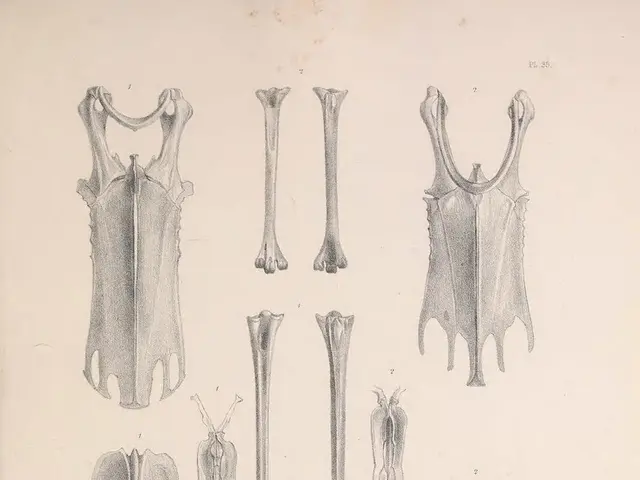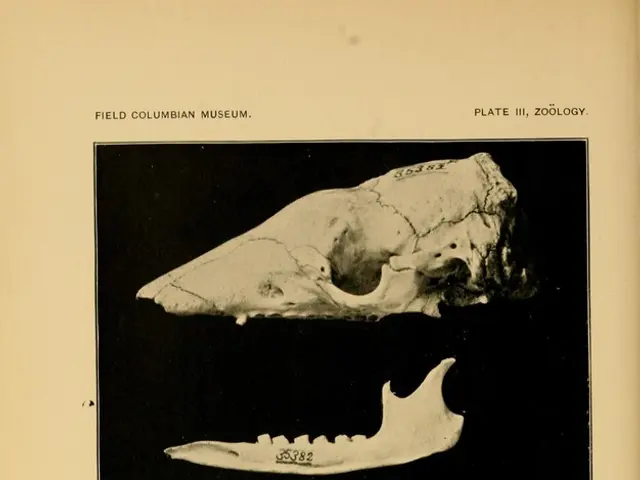Identifying Age Spots vs. Skin Cancer: Deciphering the Distinction
Harmless Age Spots vs Skin Cancer: Recognizing the Differences for Proactive Skincare
Age spots, known as solar lentigines or liver spots, are a common phenomenon as people age, appearing as small, darker patches on the skin. Although they can resemble certain types of skin cancer or precancerous growths, it's essential to recognize the key differences between age spots and skin cancer for proactive skincare.
Sun exposure plays a significant role in the development of both age spots and skin cancer. They tend to occur on areas frequently exposed to the sun, such as the hands, face, and shoulders.
Recognizing the distinctions between age spots and skin cancer is crucial for individuals to understand when professional medical advice may be necessary. Texture, color, and placement can serve as indicators of the conditions.
Age spots are generally flat, smooth, and uniform in color and shape, often appearing yellow, brown, or gray with defined borders. They are typically found on sun-exposed areas and may fade in winter but become more pronounced in summer. In contrast, skin cancer lesions can be asymmetrical, vary in color, and have irregular or blurred edges.
Unlike age spots, skin cancer is harmful and can potentially spread to other parts of the body. The three most common types of skin cancer are basal cell carcinoma, squamous cell carcinoma, and melanoma. Moreover, actinic keratosis, a precancerous growth, can appear similar to age spots, emphasizing the importance of proper monitoring and medical evaluation.
It's essential to pay close attention to new or changing marks on the skin and consult a healthcare professional if symptoms of skin cancer or actinic keratosis develop. A visible change in color, shape, size, or location, or a mark that itches, crusts, or bleeds without healing within four weeks, should prompt a medical consultation.
A doctor or dermatologist will perform a physical examination to diagnose age spots, assessing a spot's appearance, texture, and placement. A skin biopsy may be conducted if there's uncertainty to test for conditions like skin cancer or actinic keratosis. The results of a skin biopsy can determine whether an individual has skin cancer or another skin condition.
Treatment for age spots is generally not necessary, as they are harmless. However, individuals may choose to treat age spots to reduce their appearance using creams, lotions, lasers, cryosurgery, microdermabrasion, or chemical peeling.
Treatment for skin cancer and actinic keratosis depends on various factors, such as the type and stage of cancer and individual circumstances. Topical therapies, radiation therapy, chemotherapy, immunotherapy, or systemic medication may be employed as treatment options.
Regular skin checks are vital for distinguishing between harmless age spots and potentially dangerous skin cancer. Consulting a healthcare professional if you notice any new or changing skin lesions is advisable. Early diagnosis of skin cancer can make treatment more manageable and improve health outcomes.
- Consult a dermatologist for proper examination if you suspect a difference between age spots and skin cancer, as skin cancer poses a threat and may spread to other parts of the body.
- Dermatologists can diagnose age spots by assessing the spot's appearance, texture, and location, but they may conduct a skin biopsy for confirmation if unsure.
- Age spots, unlike skin cancer, are harmless and do not require treatment, though some individuals may opt to reduce their appearance with creams, lotions, or various skin care procedures.
- Adequate health-and-wellness routines involve regular skin checks and medical consultations for skin conditions like melanoma, a form of dangerous skin cancer, and other skin cancers such as basal cell carcinoma and squamous cell carcinoma.
- Science and the field of oncology continue to advance, providing increased knowledge and understanding of various medical-conditions and skin-care approaches, enabling professionals to distinguish between harmless age spots and potentially harmful skin-conditions.








